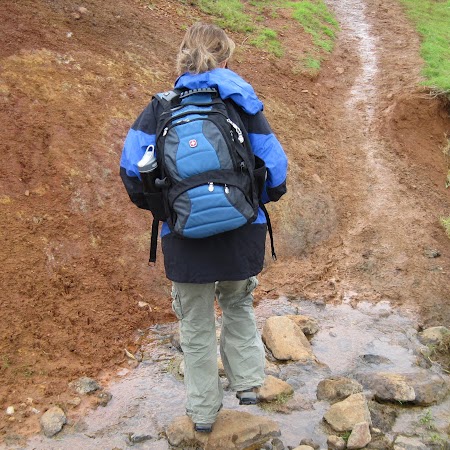Janet K Peters
age ~68
from Houston, TX
- Also known as:
-
- Janet Karen Peters
- Janet D Peters
- Janet I Peters
- Janet L Peters
- Janette K Peters
- Phone and address:
- 2019 Bauer Dr, Houston, TX 77080
Janet Peters Phones & Addresses
- 2019 Bauer Dr, Houston, TX 77080
- 10231 Eddystone Dr, Houston, TX 77043 • (713)6470028
- 2802 Wildwood Pl, Duncan, OK 73533 • (580)4750145 • (580)4750150
- Kilgore, TX
- Mason City, IA
- Longview, TX
- Queens Village, NY
- Sonora, CA
- Gilmer, TX
Lawyers & Attorneys

Janet Peters - Lawyer
view sourceSpecialties:
General Practice
Civil Practice
Criminal Law
Civil Practice
Criminal Law
ISLN:
916217721
Admitted:
1995
University:
University of Michigan, B.S.N., 1983
Law School:
Detroit College of Law at Michigan State University, J.D., 1994

Janet Ann Peters - Lawyer
view sourceISLN:
916217721
Admitted:
1995
University:
University of Michigan, B.S.N.
Law School:
Michigan State University College of Law, J.D.
Isbn (Books And Publications)

Dobis/Libis: A Guide for Librarians and Systems Managers
view sourceAuthor
Janet Peters
ISBN #
0566055902
Us Patents
-
Apparatus For Contacting Large Volumes Of Gas And Liquid Across Microscopic Interfaces
view source -
US Patent:6830608, Dec 14, 2004
-
Filed:Jan 27, 2003
-
Appl. No.:10/351629
-
Inventors:Janet K. Peters - Houston TX
-
Assignee:Jaeco Technology, Inc. - Houston TX
-
International Classification:B01D 4716
-
US Classification:96272, 95217, 95219, 96274, 96326, 261 792, 2611121
-
Abstract:An apparatus for contacting large volumes of gas and liquid together on a microscope scale for mass transfer or transport processes wherein the contact between liquid and gas occurs at the interfaces of a multitude of gas bubbles. Multiple porous tubes assembled in a bundle inside a pressure vessel terminate at each end in a tube sheet. A thin film helical liquid flow is introduced into the inside of each porous tube around and along its inside wall. Gas is sparged into the porous media and the liquid film so that an annular two phase flow with a uniform distribution of tiny gas bubbles results. The gas flow is segregated from the liquid flow without first passing through the porous media and through the liquid film. Nozzles at the lower end of the tubes divert liquid flow to a vessel and redirect the gas flow in a countercurrent direction.
-
Method And Apparatus For Transporting, Storing And Dispensing Viscous Products
view source -
US Patent:6834689, Dec 28, 2004
-
Filed:Sep 24, 2003
-
Appl. No.:10/670074
-
Inventors:Janet K. Peters - Houston TX
-
Assignee:Jaeco Technology, Inc. - Houston TX
-
International Classification:B65B 104
-
US Classification:141302, 141 27, 222389
-
Abstract:Apparatus and method for transporting, storing and dispensing highly viscous material requiring dispensing pressures greater than 15 psig incorporates one or more cylindrical ASME pressure vessels having first and second ends, a product inlet and product dispensing valve at the first end, a bi-directional pipeline pig slidably disposed in the vessel in fluid sealing relation, a gas supply valve and a first gas vent valve connected with the second end, and a second gas vent valve connected with the vessel for venting gas from the vessel during a filling operation. The vessels are filled by venting gas from behind the pig and introducing viscous material into the vessel through the product inlet valve to move the pig toward the second end, and the viscous material is dispensed by introducing gas under pressure behind the pig at a pressure greater than 15 psig to move it toward the vessel first end to force the viscous material in the vessel through the product dispensing valve.
-
Method For Contacting Large Volumes Of Gas And Liquid Across Microscopic Interfaces
view source -
US Patent:6918949, Jul 19, 2005
-
Filed:Nov 5, 2004
-
Appl. No.:10/981718
-
Inventors:Janet K. Peters - Houston TX, US
-
Assignee:Jaeco Technology, Inc. - Houston TX
-
International Classification:B01D019/00
B01F003/04 -
US Classification:95185, 95217, 95219, 95261, 96202, 96209, 96216, 261 792, 2611221
-
Abstract:A method for contacting large volumes of gas and liquid together on a microscopic scale for mass transfer or transport processes wherein the contact between liquid and gas occurs at the interfaces of a multitude of gas bubbles. Multiple porous tubes assembled in a bundle inside a pressure vessel terminate at each end in a tube sheet. A thin film helical liquid flow is introduced into the inside of each porous tube around and along its inside wall. Gas is sparged into the porous media and the liquid film so that an annular two phase flow with a uniform distribution of tiny gas bubbles results. The gas flow is segregated from the liquid flow without first passing through the porous media and through the liquid film. Nozzles at the lower end of the tubes divert liquid flow to a vessel and redirect the gas flow in a countercurrent direction.
-
Strap Assembly For Playing A Musical Instrument In A Sitting Or Standing Position With The Instrument In A Face-Up Position
view source -
US Patent:8618393, Dec 31, 2013
-
Filed:Apr 18, 2012
-
Appl. No.:13/449315
-
Inventors:Janet K. Peters - Duncan OK, US
-
International Classification:G10D 3/00
-
US Classification:84327
-
Abstract:A strap assembly worn by a player in a sitting or standing position for supporting a guitar or similar instrument in a generally horizontal face-up position, stabilizes the instrument while it is being played without impeding freedom of movement of the player's hands. The strap assembly includes an elongate shoulder strap, a shoulder pad slidably mounted on the shoulder strap, an instrument headstock strap releasably connected to a first end of the shoulder strap having a looped end for attachment to the instrument headstock, an instrument body strap releasably connected to a second end of the shoulder strap for attachment to the body of the instrument, and a forearm loop mounted on the instrument body strap for receiving the forearm of the picking-hand of the instrument player.
-
Gas Sparging Method For Removing Volatile Contaminants From Liquids
view source -
US Patent:55319041, Jul 2, 1996
-
Filed:Mar 20, 1995
-
Appl. No.:8/406502
-
Inventors:Thomas L. Grisham - Tyler TX
Janet K. Peters - Gilmer TX -
Assignee:Revtech Industries, Inc. - Kilgore TX
-
International Classification:C02F 124
-
US Classification:210703
-
Abstract:Apparatus for removing volatile contaminant compounds from a liquid by sparging a cleaning gas therethrough comprises a volatile contaminant extraction assembly including a hollow porous tube surrounded by an outer jacket defining a gas plenum between the jacket and the porous tube; a contaminated liquid feed assembly including a nozzle for injecting liquid into the porous tube in a spiraling flow pattern around and along the porous tube; a gas-liquid separator assembly including a nonporous degassing tube coaxially aligned with and connected to the porous tube, a separator tube coaxially aligned with and connected to the degassing tube and flaring outwardly in diameter from the degassing tube, and a gas duct coaxially aligned with the separator tube and extending into the separator tube to collect and convey cleaning gas therefrom; a clean liquid collection assembly; and a gas discharge assembly. A method of removing volatile contaminants from a liquid comprises the general steps of introducing a stream of contaminated liquid to the hollow interior of a cylindrical porous tub in a thin film following a spiral flow pattern around and along the wall of the tube; controlling the physical characteristics of the liquid film and the flow pattern followed by the film through the tube; sparging cleaning gas through the wall of the tube and into the liquid film at a preselected flow rate; segregating contaminant laden cleaning gas from the liquid within the tube; and separating the cleaned liquid stream from the contaminant laden gas stream.
-
Method And Apparatus For Optimizing Gas-Liquid Interfacial Contact
view source -
US Patent:55297013, Jun 25, 1996
-
Filed:Jun 21, 1995
-
Appl. No.:8/492766
-
Inventors:Thomas L. Grisham - Tyler TX
Janet K. Peters - Kilgore TX
Keith W. Sharp - Richmond TX
Edward E. Ebel - Mabank TX -
Assignee:Revtech Industries, Inc. - Kilgore TX
-
International Classification:B01D 2126
-
US Classification:210787
-
Abstract:Apparatus for optimizing gas-liquid interfacial contact for molecular mass transfer between gas and liquid comprises a gas-liquid contactor assembly including a hollow porous tube surrounded by an outer jacket defining a gas plenum between the jacket and the porous tube; a liquid feed assembly including a nozzle for injecting liquid into the porous tube in a spiraling flow pattern around and along the porous tube; a gas-liquid separator assembly at the first end of the porous tube including a nonporous degassing tube coaxially aligned with and connected to the porous tube, a gas outlet port coaxially aligned with the degassing tube to receive a first portion of gas flowing from the degassing tube, a first gas duct coaxially aligned with and connected to the gas outlet duct to convey the first portion of gas therefrom; a liquid collection assembly; and a second gas discharge assembly to collect and convey gas from the first end of the porous tube. A method of optimizing gas-liquid interfacial contact comprises the general steps of introducing a stream of liquid to the hollow interior of a cylindrical porous tube in a thin film following a spiral flow pattern around and along the wall of the tube; controlling the physical characteristics of the liquid film and the flow pattern followed by the film through the tube; sparging gas through the wall of the tube and into the liquid film at a preselected flow rate so as to create a two phase gas-liquid froth around the wall of the tube and a discrete column of gas in the central portion of the tube; maintaining the froth flow in a radial force field so as to prevent mixing of the froth and gas in the central column; removing gas forming the column from both ends of the tube; and removing liquid from the tube.
-
Method For Creating Gas-Liquid Interfacial Contact Conditions For Highly Efficient Mass Transfer
view source -
US Patent:56628110, Sep 2, 1997
-
Filed:Mar 18, 1996
-
Appl. No.:8/617416
-
Inventors:Thomas L. Grisham - Tyler TX
Janet K. Peters - Kilgore TX
Keith W. Sharp - Richmond TX
Edward E. Ebel - Mabank TX -
Assignee:Revtech Industries, Inc. - Kilgore TX
-
International Classification:B01D 2126
-
US Classification:210788
-
Abstract:Apparatus for creating gas-liquid interfacial contact conditions for highly efficient mass transfer between gas and liquid comprises a gas-liquid contactor assembly including a hollow porous tube surrounded by an outer jacket defining a gas plenum between the jacket and the porous tube; a liquid feed assembly including a nozzle for injecting liquid into the porous tube in a spiraling flow pattern around and along the porous tube; a gas-liquid separator assembly at the first end of the porous tube including a nonporous degassing tube coaxially aligned with and connected to the porous tube, a gas outlet port coaxially aligned with the degassing tube to receive a first portion of gas flowing from the degassing tube, a first gas duct coaxially aligned with and connected to the gas outlet duct to convey the first portion of gas therefrom; and a liquid collection assembly. A second gas discharge assembly to collect and convey gas from the first end of the porous tube is also disclosed. A method of creating gas-liquid interfacial contact conditions for highly efficient mass transfer comprises the general steps of introducing a stream of liquid to the hollow interior of a cylindrical porous tube in a thin film following a spiral flow pattern around and along the wall of the tube; controlling the physical characteristics of the liquid film and the flow pattern followed by the film through the tube; sparging gas through the wall of the tube and into the liquid film at a preselected flow rate so as to create a two phase gas-liquid froth around the wall of the tube and a discrete column of gas in the central portion of the tube; maintaining the froth flow in a radial force field so as to prevent mixing of the froth and gas in the central column; removing gas forming the column from both ends of the tube; and removing liquid from the tube.
-
Apparatus For Creating Gas-Liquid Interfacial Contact Conditions For Highly Efficient Mass Transfer
view source -
US Patent:60043865, Dec 21, 1999
-
Filed:Aug 29, 1997
-
Appl. No.:8/920831
-
Inventors:Thomas L. Grisham - Tyler TX
Janet K. Peters - Houston TX
Keith W. Sharp - Houston TX
Edward E. Ebel - Mabank TX -
Assignee:RevTech Industries, Inc. - Houston TX
-
International Classification:B01D 2126
-
US Classification:96202
-
Abstract:Apparatus for creating gas-liquid interfacial contact conditions for highly efficient mass transfer between gas and liquid includes a gas-liquid contactor assembly including a hollow porous tube surrounded by an outer jacket defining a gas plenum between the jacket and the porous tube; a liquid feed assembly including a nozzle for injecting liquid into the porous tube in a spiraling flow pattern around and along the porous tube; a gas-liquid separator assembly at the first end of the porous tube including a nonporous degassing tube coaxially aligned with and connected to the porous tube, a gas outlet port coaxially aligned with the degassing tube to receive a first portion of gas flowing from the degassing tube, a first gas duct coaxially aligned with and connected to the gas outlet duct to convey the first portion of gas therefrom; and a liquid collection assembly. A second gas discharge assembly to collect and convey gas from the first end of the porous tube is also disclosed.
Medicine Doctors

Janet Peters
view sourceSpecialties:
Pediatric Endocrinology
Work:
Los Angeles County USC Pediatrics
1200 N State St STE 124, Los Angeles, CA 90033
(323)2263691 (phone), (323)2265692 (fax)
1200 N State St STE 124, Los Angeles, CA 90033
(323)2263691 (phone), (323)2265692 (fax)
Languages:
English
Description:
Ms. Peters works in Los Angeles, CA and specializes in Pediatric Endocrinology. Ms. Peters is affiliated with LAC USC Medical Center.
Name / Title
Company / Classification
Phones & Addresses
Director
JAECO TECHNOLOGY, INC
2802 Wildwood Pl, Duncan, OK 73533
Box 120 BOX 1205, Duncan, OK 73533
Box 120 BOX 1205, Duncan, OK 73533
Past President
POE ELEMENTARY SCHOOL PARENT-TEACHER ORGANIZATION
5100 Hazard St, Houston, TX 77098
Chief Exec, Director , Chief Executive Offi
JANMAAE INC
11850 Plumpoint Dr, Houston, TX 77099
12023 Bissonnet St, Houston, TX 77099
9525 Bissonnet, Sugar Land, TX 77496
13535 Blue Marlin Ln, Houston, TX 77083
12023 Bissonnet St, Houston, TX 77099
9525 Bissonnet, Sugar Land, TX 77496
13535 Blue Marlin Ln, Houston, TX 77083
Googleplus

Janet Peters
Education:
Rhode Island College - Psychology, Rhode Island College - MSW
Tagline:
Be Yourself and Smile

Janet Peters
Work:
Carnegie Mellon University - Advisor for Undergraduate and Professional Masters Programs (7)

Janet Peters

Janet Peters

Janet Peters

Janet Peters

Janet Peters

Janet Peters
Myspace

Janet Phillipi Peters
view source
Janet Peters
view source
Janet Peters Lauletta
view source
Janet Stieglitz Peters
view source
Janet Gibson Peters
view source
Janet Peters Ellis
view source
Janet Chapin Peters
view source
Janet Peters Stins
view sourceClassmates

Janet Couture (Peters)
view sourceSchools:
Foote Elementary School Lincoln Park MI 1958-1962, Lincoln Park High School Lincoln Park MI 1970-1973
Community:
John Ludden
Biography:
I've traveled a great deal of the country, visited England and France, but am still ...
Janet Peters-kohly (Pete...
view sourceSchools:
Dixon High School Dixon MO 1976-1980
Community:
Tammy Hutchison, Pam Parrett, Eddie Mcneil
Biography:
About me... The photo for "then" was Junior Prom 1979, me and Darryl. My father ...

Janet Viar (Peters)
view sourceSchools:
Overton High School Memphis TN 1970-1974
Community:
Bet Hood

Janet Jansen (Peters)
view sourceSchools:
Springvalley Secondary High School Kelowna Saudi Arabia 1978-1982
Community:
Dudley Gordon, Mary Stubbs, Shelley Kuehn, Sherry Gosselin

Janet Eldred (Peters)
view sourceSchools:
Chuckey Elementary School Chuckey TN 1945-1948, Madison Junior High School Tampa FL 1952-1953
Community:
Dianne Mclaughlin, John Vitch, Mark Davis
Biography:
Life
You knew me as Janet Peters in school. After graduation I married Lt.Michael E...

Janet Jessup (Peters)
view sourceSchools:
Alden High School Alden IA 1972-1976
Community:
Robert Hoffman, Cecilia Glagovich, Ric Anikanov, Lori Shukers
Biography:
Life
Randy & I just celebrated our 30th anniversary this week. We live in Brooten,...

Janet Covarrubio (Peters)
view sourceSchools:
Wewahitchka High School Wewahitchka FL 1975-1979
Community:
Becky Rhames, Danny Canning

Janet Yolanda Peters Spar...
view sourceSchools:
Sandy Spring Friends School Sandy Spring MD 1975-1979
Community:
Harvey Kaplan, Kim Kemeys, Nancy Stallings, Michelle Pettway, Mitchell Mills
Youtube
Flickr
Plaxo

Janet Peters
view sourceBrooklyn,NYRN at Coney Island Hospital

Janet Peters
view sourceLeesburg

Janet Peters
view sourceNYC

Janet Peters
view sourceColorado Springs, COSenior Business Analyst at Ingenix

janet peters
view sourceNew London Hospital
Get Report for Janet K Peters from Houston, TX, age ~68


















